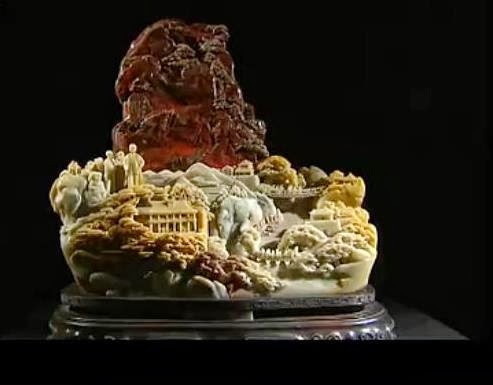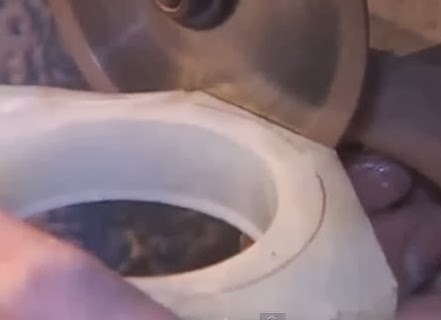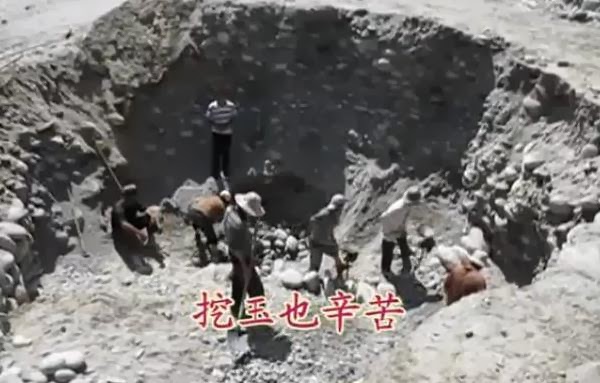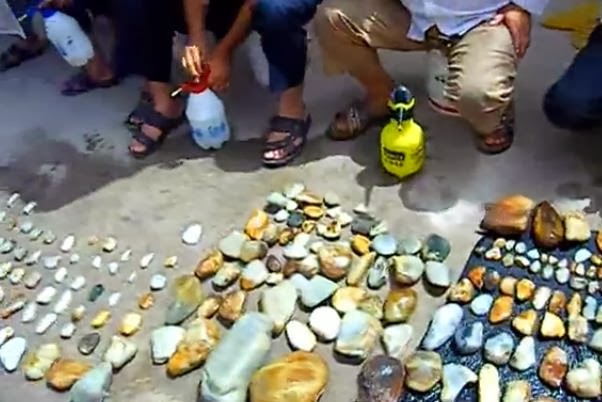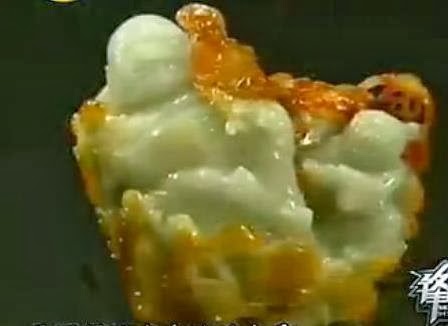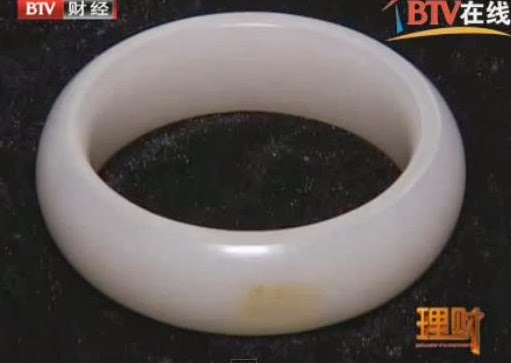In 2000, a businessman dealing in jadeite, the green jade from Burma, spotted a giant jadeite boulder weighing 4 tons in weight. After closely examining the boulder for traces of the characteristic green jadeite colour, he was sure that this piece of boulder was of superior quality, meaning the interior of the boulder could be mainly jadeite of fine green colour. He bought the boulder and took three years to bring it back to Yunnan where he was based. In the business of boulder gambling in that part of the world, one normally look for the green traces on the surface of uncut jade boulder and make a bid for it, usually at a high price. After acquiring the boulder, He then ask for the boulder to be cut.
 |
| Green jade revealed |
If the interior of the boulder reveals true gem quality (green jadeite colour) jade, he can reap huge profit when the boulder is cut into jade bangles of gem quality. Fine jadeite bangles have been auctioned for over tens of million of dollars.
Otherwise, he stands to lose big in the game if the cut boulder does not reveal any good jadeite in it. So this businessman was very confident that he got the right boulder of good quality. He bought this huge rock and took it home.
 |
| The businessman with the jade boulder weighing 4 tons |
 |
| Some part reveals jade below |
 |
| Jadeite shines under torch light |
He and his team of workers then spent 13 months to study the boulder to identify the green patches of jadeite by removing some external layer of rocky stuff. The bits and pieces of green jade that fell of this boulder were later cut into small little gem stones which can fetch 20 to 30 thousands per piece. One could imagine how much this huge jadeite boulder would fetch when the whole boulder is cut into high quality jewelry pieces. He named this boulder
Asia One and has not decided what to do with it yet. At a weight of 4 tons, it must the king of all jadeite.
 |
| Small jadeite pieces from the boulder costing 30000 dollars |
The same businessman earlier paid 12 millions for another jadeite boulder with a business associate. Although he spotted many parts of the boulder to contain the characteristic greenish jadeite colour, after cutting the boulder 3 times, there was no sign of green jadeite in the interior. At that time, he seemed to have lost all he spent on this boulder. It is not uncommon for people to lose millions of dollars in the boulder gambling game. His partner finally left him to shoulder all the losses incurred. He kept the boulder for 2 years and then later he decided to take a final look. He realized that the not every part of the boulder was useless. There were black impurities intertwined with the jadeite portion of the boulder. He could ask someone to remove the impurities and the boulder could still be carved into something valuable.
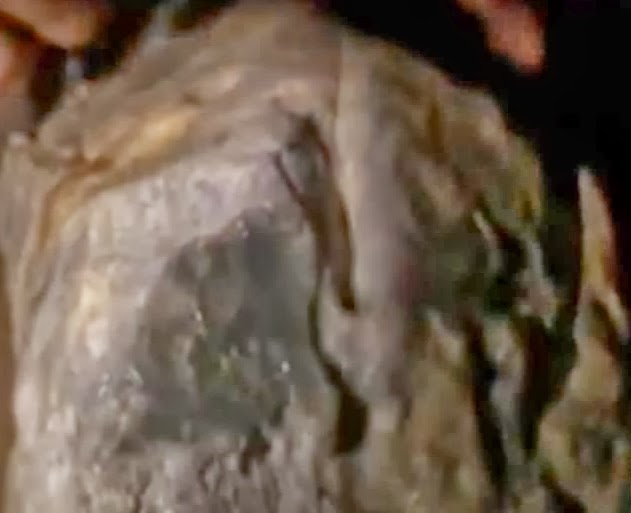 |
| Jade boulder weighing 41.5 kg costing 12 millions |
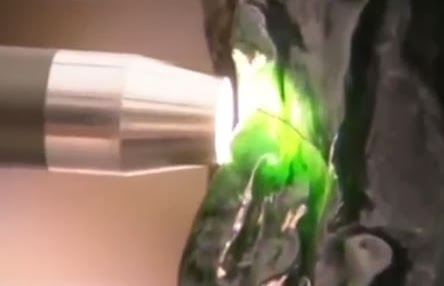 |
| Jadeite portion revealed using a torch light |
He then hired the best master in jadeite carving to work on this boulder. A few years later, a superb jadeite brush holder of fine quality was craved out from this piece of boulder. The emergence of this jadeite piece shocked the collectors' world. It has a price tag of over a hundred millions. It is the work of a skillful jade carving artist who can turn a piece of insignificant boulder into a masterpiece.
 |
| Brush holder of fine jadeite quality |
 |
| The famous green and white cabbage in Taiwan's museum |
Apart from the
Asia One, this man also possesses the biggest jadeite cabbage in history. A massive piece of jade cabbage weighing 2 tons. It was cut from a raw jade bolder of over 4 tons in weight.
 |
Jade cabbage of 2 tons in weight.
|
Good quality jadeite is judged by its colour, transparency, purity and cracks. Pure, transparent and deep green colour jadeite pieces often command a very high price.
 |
| Superb quality jadeite |





















